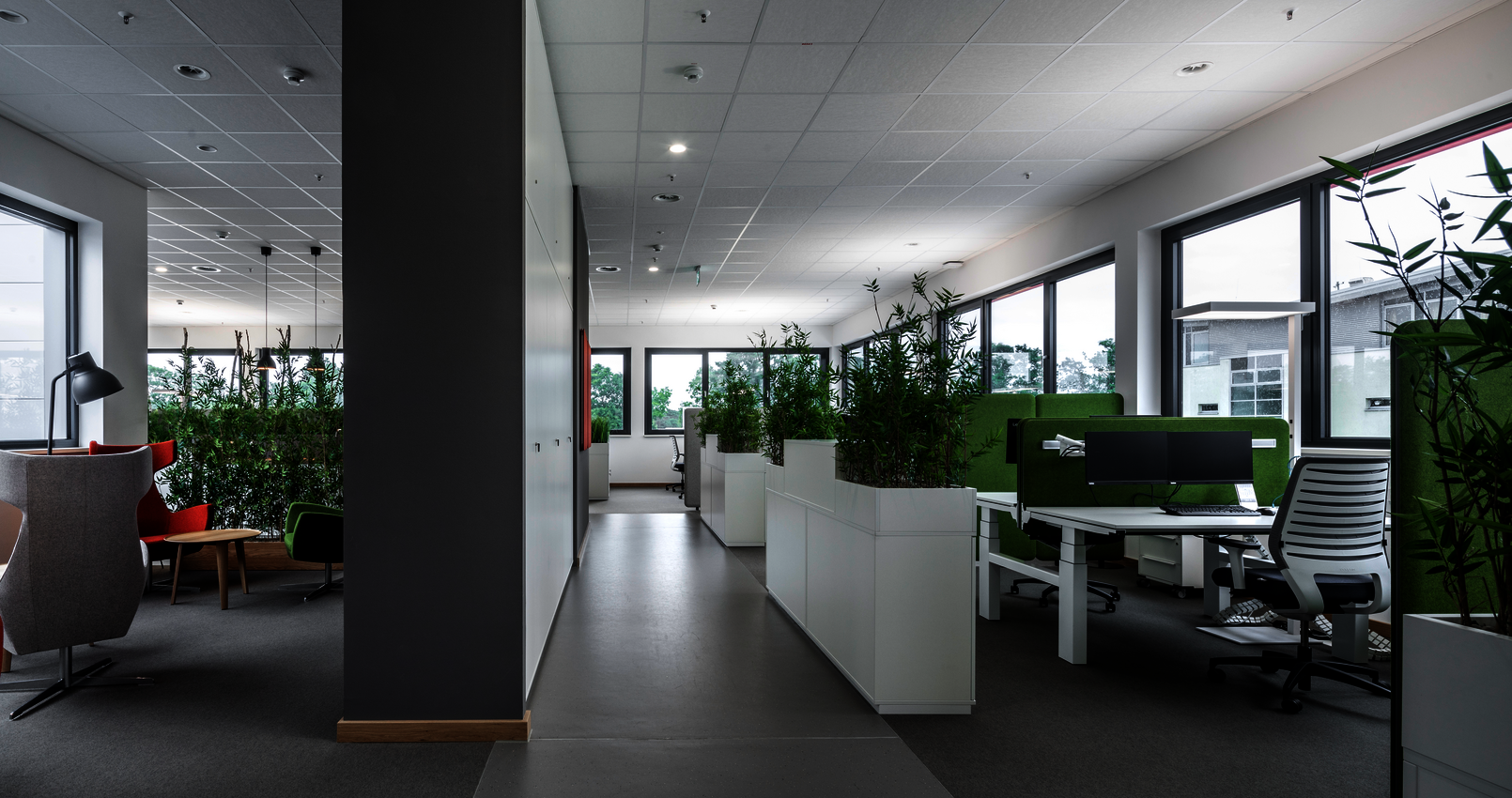
Whether free-standing or in planters - plants in the office help to optimise room acoustics
Table panel for acoustic shielding
Acoustically effective fronts
with micro-perforations such as
with WINEA MAXX
Acoustically effective wall panels
or individually printable
acoustic pictures
Room acoustics play a crucial role in the efficiency and well-being of employees. Good office acoustics dampen disturbing noises such as conversations, ringing telephones or the sound of keyboards and create a quiet, focused working atmosphere. This promotes employee productivity and concentration. Suitable acoustic furniture such as sound-absorbing walls, acoustic panels, acoustic pictures, sound absorbers on the ceiling or acoustically effective surfaces such as micro-perforated walls, which are installed in Cabinets and Sideboards, are used to optimize the room sound, especially in open office spaces.
As a rule, good room acoustics should allow normal conversations between employees without causing major disruption. This means that people can communicate with each other at an appropriate volume without impairing their colleagues' concentration.
In modern offices, noise-absorbing materials and sound-absorbing furniture are used to reduce the noise level. For Long or louder meetings, special communication zones or meeting rooms should be used to minimize disturbance to others. The acceptable volume varies from office to office and depends on individual company guidelines and the expectations of colleagues. Companies generally have the task of adjusting the volume so that it is acceptable for as many employees and their work as possible.
To improve room acoustics, it is important to first identify the causes, such as reverberation, echoes and disturbing noises. Various optimization measures can then be taken. These include the use of sound-absorbing furniture and furnishings that are Free-standing, attached to walls or the ceiling. Carpets and curtains can also help to dampen sound.
The arrangement of furniture should be carefully planned to break up and reflect sound and minimize unwanted echoes. In addition, sound-absorbing ELEMENTS such as acoustic pictures, shelf inserts and Acoustic back panels can be used to diffuse and absorb sound.
In some cases, it may be advisable to seek professional acoustic advice beforehand.
